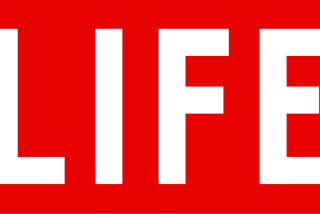Women and Power in the U.S.: Life Asks ‘What If? ‘
- Share via
Female ambition, according to five male psychiatrists interviewed in 1956 for Life magazine, is the root of mental illness in wives, emotional upset in husbands and homosexuality in boys.
By 1962, however, the enlightened Life gallantly encouraged gals to get more involved, with a story titled, “How Nice to be a Pretty Girl and Work in Washington.”
“Reading stories about women and politics in old issues of Life, or in most other magazines with histories as long as ours,” writes managing editor James R. Gaines in the June issue, “can feel like a stroll down Mortification Lane.”
Now Life attempts to redeem itself by boldly predicting what would happen “If Women Ran America.”
To find answers, the magazine polled 1,222 women and men. If women ran the show, according to that sampling, poverty would be addressed with more vigor, pay rates would be more equitable, sexual harassment would be taken more seriously, job discrimination would decline and child care would get more attention.
Guns would be harder to buy, the government would escalate its fight against violence and crime and drunk drivers would face tougher sentences.
The most telling item in Life’s remarkable package is a before and after picture of sorts.
In one shot, the nation’s two women senators--Nancy Landon Kassenbaum (R-Kan.) and Barbara A. Mikulski (D-Md.)--stand alone on the Capitol steps. On the next page, 98 women stand on the same steps, engulfing two men and illustrating how things would look if existing gender proportions in the Senate were reversed.
All in all, however, most of those surveyed think that a polar shift in the distribution of power wouldn’t change things much. But one in three think the nation would improve.
Reporter Lisa Grunwald questions that, wondering if powerful women wouldn’t succumb to the same temptations as men.
But she also quotes congressional delegate Eleanor Holmes Norton (D.C.) on one reason why that might not happen.
“What women bring to power is virginity, if you will. We have not had it. We’ve been without it. We haven’t therefore messed it up or messed over it. We know what it is to be the victims of power and therefore we are perhaps less inclined to misuse it.”
NEW ON NEWSSTANDS
It used to be you could laminate the huge L.A. Style and play Ping-Pong on it. With the June issue, it shrinks, becoming just another ‘zine sized for the coffee table.
The change is good, though. The publication still does the trend thing well, and the new size makes it easier to read the new--and occasionally improved--editorial matter.
Merrill Markoe’s “L.A. Angst” column is a fun addition, for instance, and Susan Estrich writes her “Personal Politics” column--this time on the troubled state of feminism--with dead bang clarity.
Speaking of which. . . . The magazine’s Father’s Day portrait gallery of powerful dads and their daughters offers reassurance.
Take heart, the relationships explored here seem to say: Some members of the not-so-old boys network have a deeply personal stake in seeing the world open up, in every way, to women.
And now a word about hypocrisy.
There isn’t much that folks sitting on the extreme upscale side of Los Angeles’ staggering Have-Have Not equation can do or say that won’t seem in poor taste as the riot’s embers cool. So they’d be better off keeping their mouths shut (and word processors silent).
Like many of this town’s privileged elite, though, Annie Gilbar, the new editor-in-chief of L.A. Style, just doesn’t get it. Her “Letter from the Editor” says a lot about the addled obliviousness of this city’s often well-meaning but clueless upper crust.
“You can see it in the eyes of the looters who run off with other people’s merchandise, feeling that only by taking ‘things’ will they ever be able to ‘have’ and to ‘own,’ ” Gilbar writes.
“I can see that the ‘80s with all its excesses, its vocal endorsement of money and possessions, of vulgarity and obscene spending left its mark, a dangerous mark on our society and on our people. . . .”
But L.A. Style, of course, is the bible of conspicuous consumption, and class distinctions are its raison d’etre.
Such distinctions will probably always exist. But a magazine should have better manners than decrying class envy while talking with its mouth full of Tryst’s peppered and sesame-crusted tuna with soya garlic sauce ($17.95).
More to Read
Get the L.A. Times Politics newsletter
Deeply reported insights into legislation, politics and policy from Sacramento, Washington and beyond. In your inbox twice per week.
You may occasionally receive promotional content from the Los Angeles Times.









